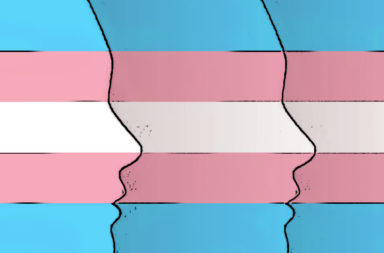Many companies now promote diversity and inclusion in the workplace in order to attract candidates to their roles.
In doing so it’s important that they practice what they preach. Providing employees with a comfortable environment where they can be themselves and giving them a sense of belonging is a core element for an array of communities. With pride month still in continuation, we ask what does it mean to be LGBTQ friendly?
Over the years we have seen a big change in LGBTQ rights across the globe and we continue to move towards equality. But, despite these gains, there is still so much more to do. Here’s the deal! While you say your workplace is inclusive what are you doing to make sure it is? and if you are sure it is, is this something that you take for granted? For some of the LGBTQ community, it is easy to disguise who they really are by referring to their loved ones as partners.
So when asked by colleagues ‘what did you do for the weekend?’ it can easily be answered by saying ‘oh myself and my partner went to the new opening of that bar around the corner’. It isn’t so simple when your office decides that you can bring your other halves to an office event or something similarly meaningful. That’s when the issue of being comfortable in your workplace or being who you really are applies.
So what can you do to assure LGBTQ people feel ‘at home’ working for your company? Here are some strategies you can implement to make sure the real meaning of diversity & inclusion is alive in your workplace.
Put it in writing
Make sure to include sexual orientation and gender orientation in your non-discrimination policy. This policy will be enforced to protect the rights of any LGBTQ employee in the workplace. The HR department should make sure the policy is clearly written and that employees are encouraged to report any unlawful behaviors.
Create an inclusive environment
Companies looking to hire LGBTQ candidates should provide an inclusive environment. If you are unsure of how to create an inclusive company culture why not create a forum where LGBTQ employees are encouraged to share their ideas on how to make a better company culture.
Supply Diversity Training
It is crucial to socialise the anti-discrimination policy for all divisions within your organisation. You can also provide diversity training for employees and supervisors. In this training program, you can emphasise on the conducts that are allowed and prohibited in the workplace. For example, you should warn your staff against using offensive language, passing derogatory remarks or gossiping with jokes ridiculing the LGBT stereotypes.
These steps should be taken to begin implementing an inclusive and diverse environment but it shouldn’t stop at that providing ongoing training, awareness and transparency is important for companies to excel at these practices.
Although the majority of research around this topic stems mainly from the UK and USA. A recent study carried out by GLEN & BelonG To reported findings of the LGBTQ work experiences in Ireland :
LGBTQ work experiences in Ireland
How LGBTI-friendly their workplace was on a scale of 0-10
1,512 participants responded to this question.
Less than 25% of participants rated their workplace as less than a 5 (or ‘somewhat LGBTI-friendly’). More than 50% (n=832) of participants rated their workplace with a 7 or above. Gay males gave the highest ratings for LGBTI-friendliness of their workplace while intersex participants gave the lowest rating.
The group was also asked whether they felt they belonged in their workplace as an LGBTI person.
Just over 50% (51.3%; n=774) felt they belonged completely and 39.6%(n=597) felt they belonged somewhat. Approximately 10% (9.1%; n=138) did not feel they
belonged at all in their workplace as an LGBTI person. In addition, they were asked whether they received positive affirmation of their LGBTI identity within their
workplace. Just over half (55.1%; n=828) of the participants indicated that they received positive affirmation of their LGBTI identity within their place of work.
Source: Feelings of belonging and experiences of positive affirmation in the workplace by LGBTI group
Negative workplace experiences
Participants were also asked about whether they experienced or witnessed LGBTI bullying in their workplace.
Approximately 17% (17.4%; n=263) had experienced LGBTI bullying and one in five (21.3%; n=321) had witnessed LGBTI bullying in their workplace.
Just over 6% of the working sample (6.4%; n=97) reported that they missed or skipped work to avoid receiving negative treatment due to being LGBTI. While 82.5% (n=1,239)
of the sample had never thought about leaving work due to the negative treatment they received because they are LGBTI, 13% (n=196) did consider leaving work and 4.5% (n=67) actually did leave work due to negative treatment.
Source: Negative experiences in the workplace by LGBTI group






